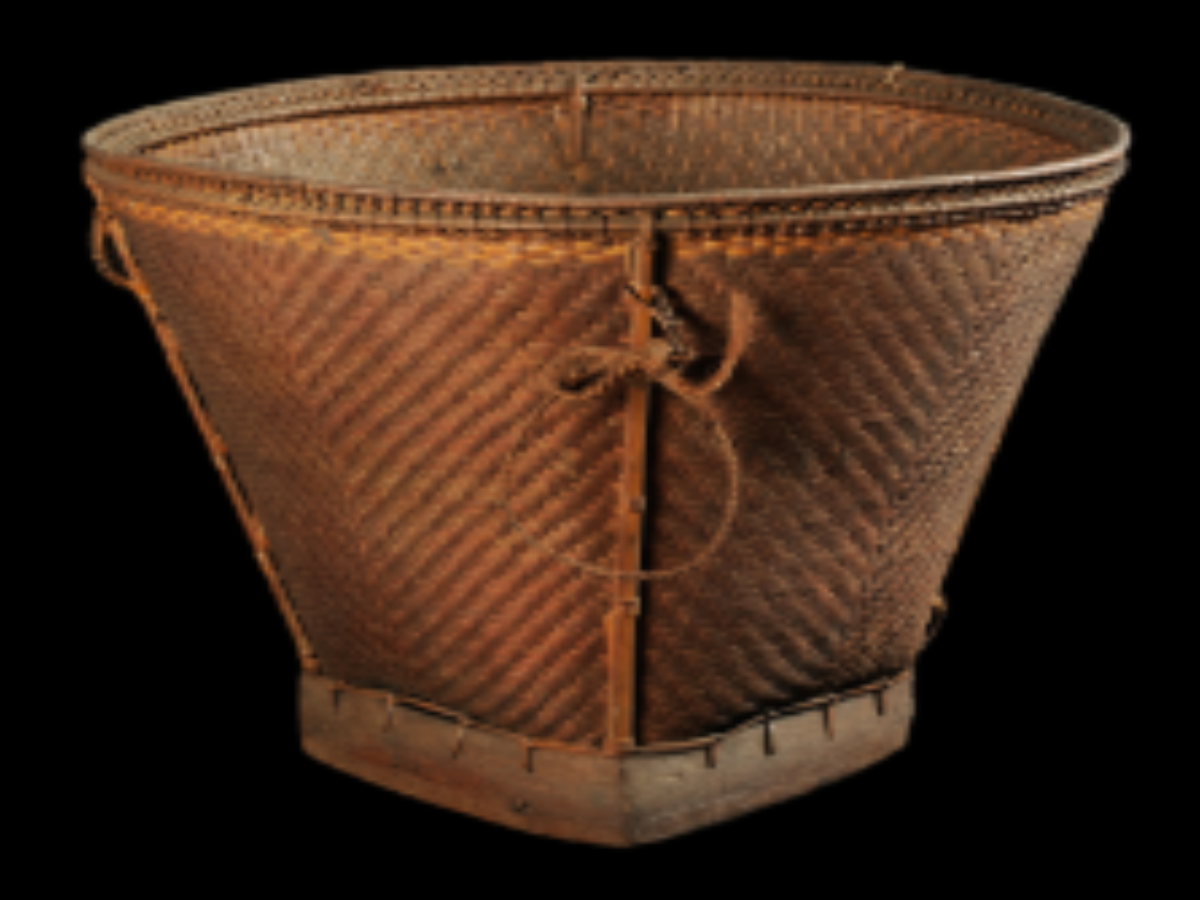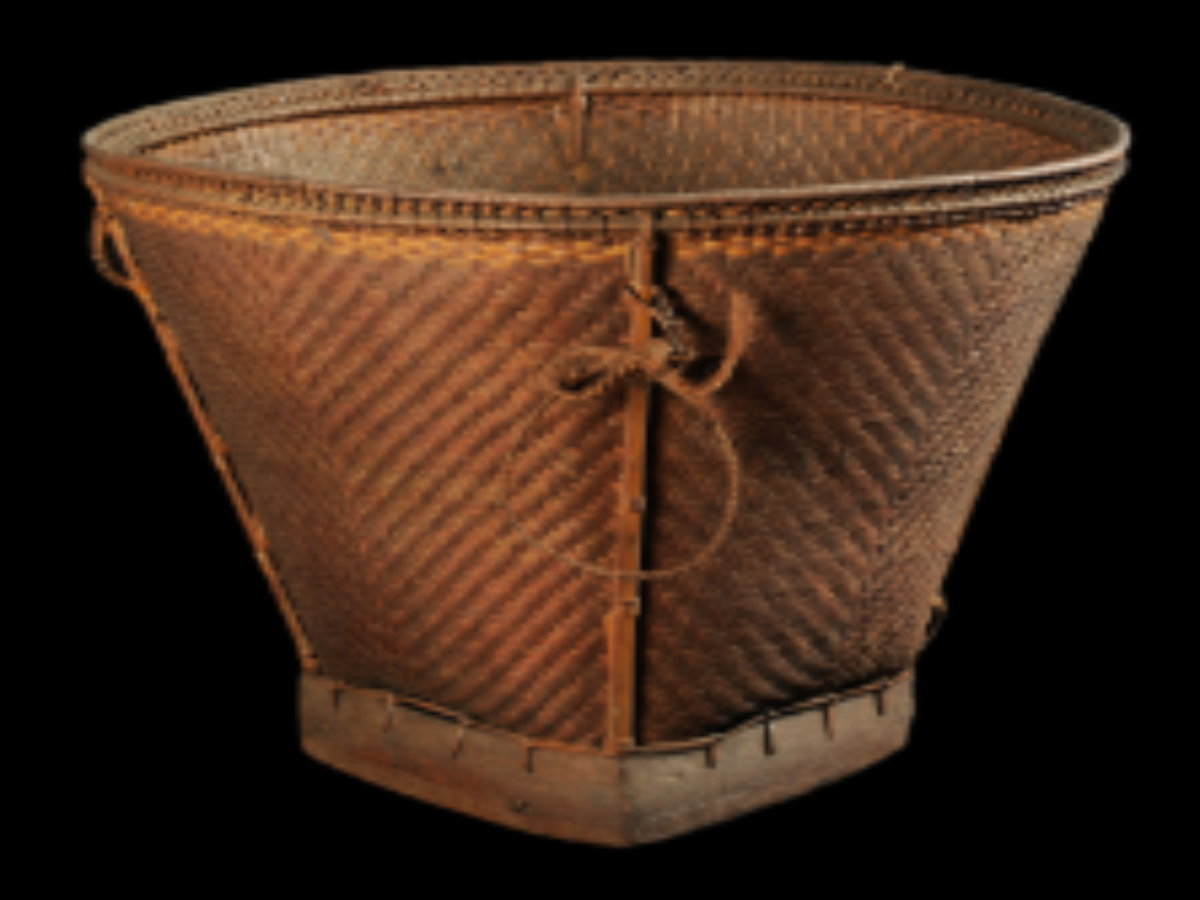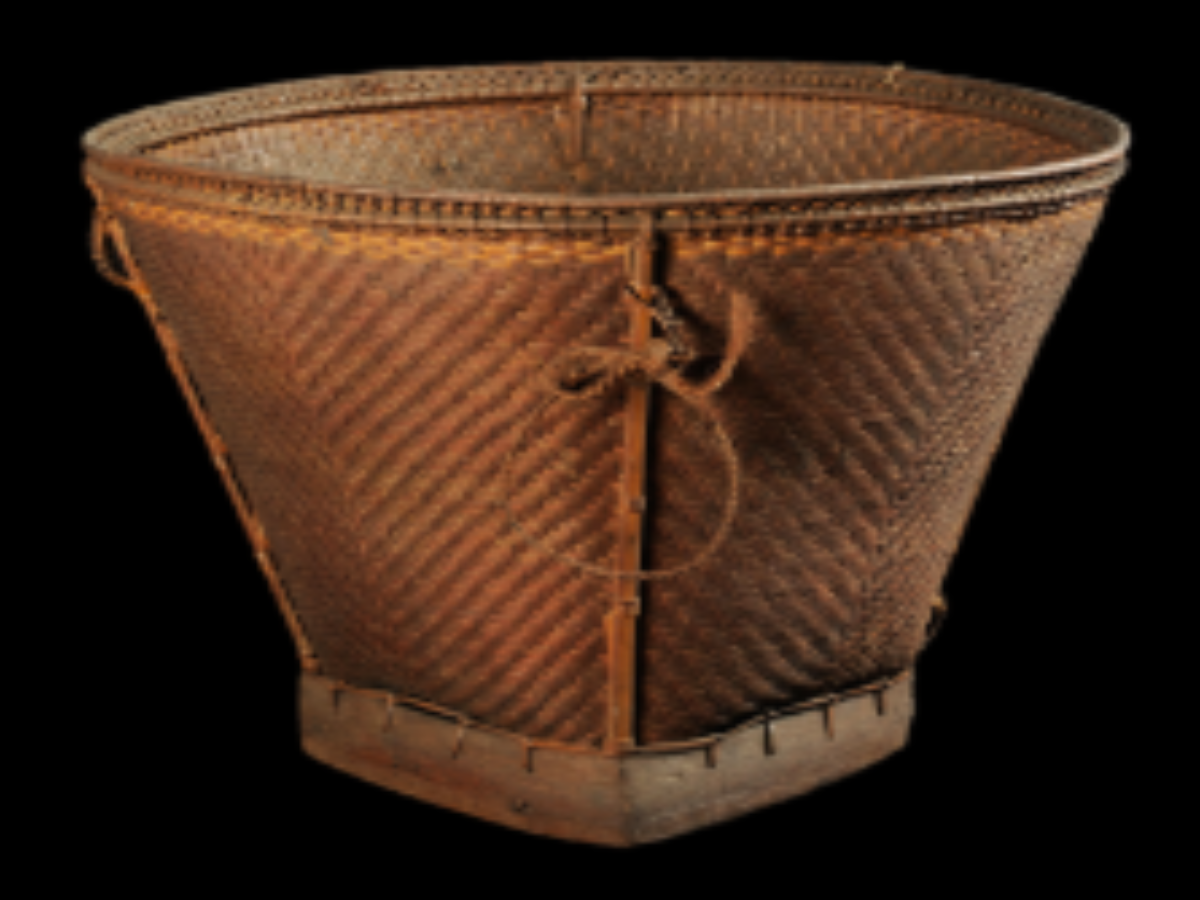State
Tribe Name
Art Type
short description
Kuki Tribe Woven Basket is a form of weaving primitive basket-making that has been passed down from generation to generation among the Kukis, an indigenous community in the northeastern states of India - Manipur, Nagaland, and Mizoram. It is usually circular at the mouth and square at the base. The shape includes visible functional designs and combined skills of the tribe in artistic weaving. The structure mainly employs the bamboo splits and cane strips, which have been securely and closely woven together, providing strength and flexibility to it. For increased firmness and stability of the basket, four split bamboo have been placed at specified points around the basket. It aids in reinforcing the overall basket structure against heavy load as well as strengthening it. The rim of the basket is again further strengthened by two splits of bamboo, tightly secured with cane straps, adding to the rigidity and preventing the rim from loosening or deforming.
Thumbnail

Filter Postion
Right
Filter Background
Off
Theme
Filter Header Image

content
Image

description
Kuki Tribe Woven Basket is a form of weaving primitive basket-making that has been passed down from generation to generation among the Kukis, an indigenous community in the northeastern states of India - Manipur, Nagaland, and Mizoram. It is usually circular at the mouth and square at the base. The shape includes visible functional designs and combined skills of the tribe in artistic weaving. The structure mainly employs the bamboo splits and cane strips, which have been securely and closely woven together, providing strength and flexibility to it. For increased firmness and stability of the basket, four split bamboo have been placed at specified points around the basket. It aids in reinforcing the overall basket structure against heavy load as well as strengthening it. The rim of the basket is again further strengthened by two splits of bamboo, tightly secured with cane straps, adding to the rigidity and preventing the rim from loosening or deforming.
The support of the basket will form by closely tying split bamboo pieces by cane strips at the bottom so that the basket can rest firmly on the surface without tipping. Two thick bamboo pieces run along tied against the outer bottom of the basket to strengthen the basket further. Thus, the basket stands on the ground with a tight and secure base preventing it from tipping over and at the same time helping minimize wear from ground contact. The Kuki Tribe Woven Basket can prove useful in carrying food, stowing away belongings, or collecting materials. It reflects how well the Kuki tribe uses what is found within the surrounding environment to produce some of the most efficient and long-lasting instruments for their daily survival.
The support of the basket will form by closely tying split bamboo pieces by cane strips at the bottom so that the basket can rest firmly on the surface without tipping. Two thick bamboo pieces run along tied against the outer bottom of the basket to strengthen the basket further. Thus, the basket stands on the ground with a tight and secure base preventing it from tipping over and at the same time helping minimize wear from ground contact. The Kuki Tribe Woven Basket can prove useful in carrying food, stowing away belongings, or collecting materials. It reflects how well the Kuki tribe uses what is found within the surrounding environment to produce some of the most efficient and long-lasting instruments for their daily survival.
Image Mode
landscape
promoted
On
Verified
Off
